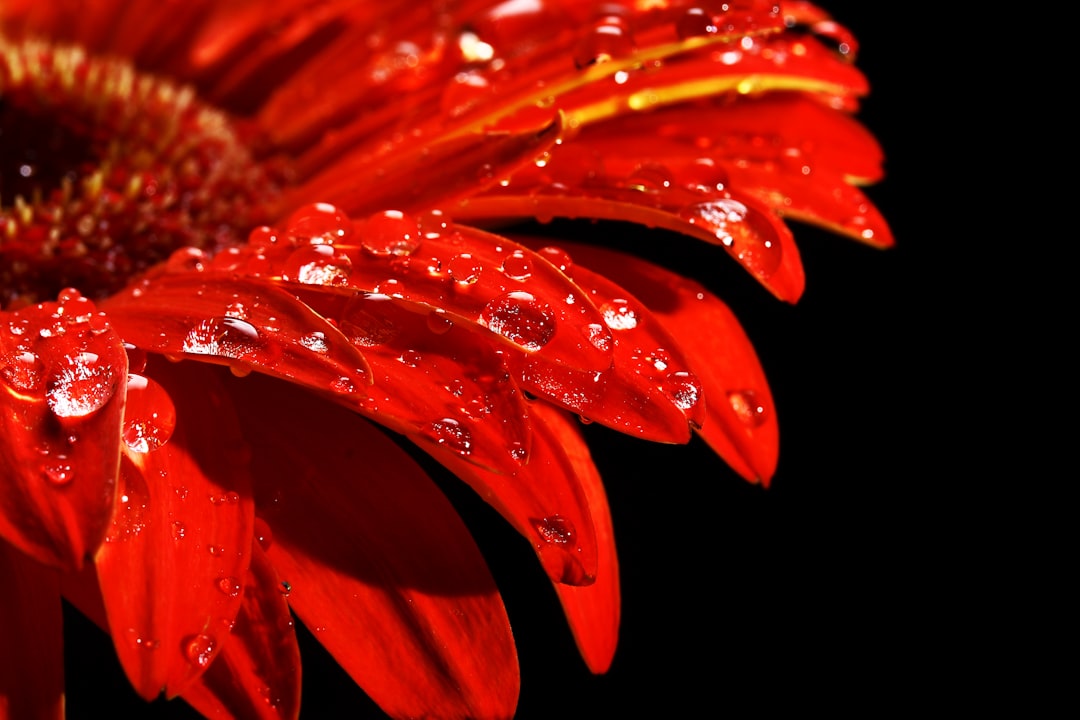The Sweet Alison plant, scientifically known as *Lobularia maritima*, is a charming perennial that has captured the hearts of gardeners and horticulturists alike. Often referred to as sweet alyssum, this plant is celebrated for its delicate clusters of tiny flowers that emit a sweet, honey-like fragrance. Its low-growing habit and lush foliage make it an excellent choice for borders, rock gardens, and containers.
The Sweet Alison plant is not only aesthetically pleasing but also serves practical purposes in the garden, such as attracting beneficial pollinators and providing ground cover. Originating from the Mediterranean region, the Sweet Alison plant has adapted well to various climates and soil types, making it a versatile addition to gardens around the world.
With a range of colors from white to lavender and pink, the Sweet Alison plant offers a palette that can complement any garden design. As we delve deeper into the history, characteristics, and care of this delightful plant, it becomes clear why it deserves a prominent place in any garden enthusiast’s collection.
Key Takeaways
- The Sweet Alison plant, also known as Lobularia maritima, is a delicate and fragrant annual flower that is popular in gardens for its sweet scent and beautiful appearance.
- The Sweet Alison plant has a rich history, originating from the Mediterranean region and being cultivated for centuries for its ornamental and aromatic qualities.
- This plant is characterized by its small, four-petaled flowers that come in a variety of colors, including white, pink, and purple, and its compact, bushy growth habit.
- The Sweet Alison plant thrives in well-drained soil and full sun, making it an ideal addition to rock gardens, borders, and containers.
- Propagation of the Sweet Alison plant is best done through seeds, and it requires minimal maintenance, making it a low-maintenance and rewarding addition to any garden.
History and Origin of the Sweet Alison Plant
The Sweet Alison plant has a rich history that dates back to ancient times. Native to the Mediterranean region, it was first documented in the writings of early botanists who marveled at its beauty and fragrance. The plant was often associated with love and romance, leading to its use in various cultural traditions and folklore.
In ancient Greece, for instance, it was believed that planting Sweet Alison near one’s home would bring good fortune and happiness. This historical significance has contributed to its enduring popularity in gardens across Europe and beyond. As European settlers ventured to the Americas, they brought with them seeds of the Sweet Alison plant, which quickly adapted to the new environment.
By the 19th century, it had become a staple in American gardens, valued not only for its ornamental qualities but also for its ability to attract pollinators such as bees and butterflies. The plant’s resilience and adaptability have allowed it to flourish in various climates, from temperate regions to warmer areas, making it a beloved choice for gardeners seeking low-maintenance yet visually appealing plants.
Characteristics and Appearance of the Sweet Alison Plant

The Sweet Alison plant is characterized by its compact growth habit, typically reaching heights of 6 to 12 inches. Its foliage consists of small, oval-shaped leaves that are bright green and slightly hairy, providing a lush backdrop for its profuse blooms. The flowers are perhaps the most striking feature of this plant; they are small, usually measuring about 1/4 inch across, and grow in dense clusters that create a carpet of color.
The blooms can be found in shades of white, lavender, pink, and purple, often with a sweet fragrance that attracts pollinators. In addition to its visual appeal, the Sweet Alison plant is known for its ability to spread and fill in spaces quickly. This makes it an excellent choice for ground cover or as an edging plant in garden beds.
The flowers typically bloom from spring through fall, providing a long season of interest in the garden. The combination of its fragrant flowers and lush foliage makes the Sweet Alison plant not only a beautiful addition but also a sensory delight for anyone who encounters it.
Ideal Growing Conditions for the Sweet Alison Plant
| Condition | Ideal |
|---|---|
| Temperature | 60-75°F (15-24°C) |
| Light | Full sun to partial shade |
| Soil | Well-draining, fertile soil |
| Water | Regular watering, allow soil to dry between waterings |
| Fertilizer | Monthly during growing season |
| Pruning | Trim after flowering to encourage bushiness |
To thrive, the Sweet Alison plant prefers well-drained soil that is rich in organic matter. While it can tolerate poor soil conditions, providing it with nutrient-rich soil will enhance its growth and flowering potential. The ideal pH level for this plant ranges from slightly acidic to neutral (around 6.0 to 7.0).
When planting Sweet Alison, it’s essential to ensure that the site receives full sun to partial shade; while it can tolerate some shade, too much can lead to leggy growth and reduced flowering. Watering is another critical aspect of creating ideal growing conditions for the Sweet Alison plant. It prefers consistently moist soil but is susceptible to root rot if overwatered.
Therefore, it’s crucial to allow the top inch of soil to dry out between waterings. In regions with hot summers, regular watering may be necessary to keep the soil adequately moist. Additionally, incorporating mulch around the base of the plant can help retain moisture while suppressing weeds that compete for nutrients.
Propagation and Planting of the Sweet Alison Plant
Propagation of the Sweet Alison plant can be achieved through seeds or cuttings. Seed propagation is the most common method and can be done either indoors or outdoors. If starting seeds indoors, they should be sown about 6-8 weeks before the last frost date.
The seeds require light for germination; therefore, they should be lightly pressed into the soil surface without being covered. Once seedlings have developed a few true leaves and outdoor conditions are favorable, they can be transplanted into the garden. For those who prefer vegetative propagation, taking cuttings from healthy plants is an effective method.
Cuttings should be taken in early spring or late summer when the plant is actively growing.
Keeping the cuttings in a warm environment with indirect sunlight will encourage root development within a few weeks.
Once rooted, these cuttings can be transplanted into larger pots or directly into garden beds.
Care and Maintenance of the Sweet Alison Plant

Caring for the Sweet Alison plant involves regular maintenance practices that promote healthy growth and abundant flowering. One essential aspect is deadheading spent blooms throughout the growing season. This practice encourages the plant to produce more flowers rather than diverting energy into seed production.
By removing faded flowers, gardeners can enjoy a continuous display of vibrant blooms from spring until fall. Fertilization is another important consideration for maintaining healthy Sweet Alison plants. A balanced fertilizer applied every four to six weeks during the growing season can enhance flowering and overall vigor.
However, it’s crucial not to over-fertilize, as this can lead to excessive foliage growth at the expense of blooms. Additionally, regular monitoring for pests and diseases is essential; while Sweet Alison is generally resilient, keeping an eye out for aphids or powdery mildew can help prevent potential issues before they escalate.
Common Pests and Diseases of the Sweet Alison Plant
While the Sweet Alison plant is relatively hardy, it can still fall victim to certain pests and diseases that may hinder its growth or aesthetic appeal. Aphids are one of the most common pests that affect this plant; these small insects feed on sap from tender new growth, leading to distorted leaves and stunted growth. Regularly inspecting plants for signs of aphid infestations—such as curled leaves or sticky residue—can help gardeners take prompt action by using insecticidal soap or introducing beneficial insects like ladybugs.
Powdery mildew is another concern for Sweet Alison plants, particularly in humid conditions or when air circulation is poor. This fungal disease appears as a white powdery coating on leaves and stems, which can inhibit photosynthesis and weaken the plant over time. To combat powdery mildew, it’s essential to ensure adequate spacing between plants for airflow and avoid overhead watering that can create a damp environment conducive to fungal growth.
If powdery mildew does occur, applying fungicides specifically designed for this issue can help restore plant health.
Uses of the Sweet Alison Plant in the Garden
The versatility of the Sweet Alison plant makes it an excellent choice for various applications within garden design. Its low-growing habit allows it to serve as an effective ground cover that suppresses weeds while adding visual interest with its colorful blooms. Gardeners often use it along pathways or borders where its fragrant flowers can be appreciated up close.
Additionally, its ability to spill over containers makes it a popular choice for hanging baskets or window boxes. Beyond its ornamental uses, Sweet Alison also plays a vital role in attracting beneficial insects such as bees and butterflies to the garden ecosystem. By incorporating this plant into pollinator gardens or vegetable plots, gardeners can enhance biodiversity while supporting local wildlife populations.
Furthermore, its fragrant flowers make it an excellent companion for other flowering plants that benefit from increased pollinator activity.
Companion Plants for the Sweet Alison Plant
When selecting companion plants for Sweet Alison, it’s essential to consider those that share similar growing conditions and complement its aesthetic qualities. One popular companion is pansies (*Viola tricolor*), which thrive in similar environments and provide vibrant color contrasts against the delicate blooms of Sweet Alison. Another excellent pairing is with snapdragons (*Antirrhinum majus*), which offer vertical height while benefiting from increased pollinator activity generated by nearby Sweet Alison plants.
In addition to annuals like pansies and snapdragons, perennial companions such as catmint (*Nepeta spp.*) or lavender (*Lavandula spp.*) can create harmonious combinations in garden beds. These plants not only share similar sun and soil requirements but also attract beneficial insects while providing contrasting textures and colors that enhance overall visual appeal.
Harvesting and Enjoying the Sweet Alison Plant
Harvesting from your Sweet Alison plants can be a delightful experience that allows you to enjoy their beauty indoors as well as outdoors. The flowers are edible and can be used as garnishes in salads or desserts due to their sweet flavor and attractive appearance. To harvest flowers effectively, it’s best to do so in the morning when they are fully open but before they begin to wilt under the heat of the day.
In addition to culinary uses, Sweet Alison flowers can also be dried for use in potpourri or floral arrangements. To dry them effectively, gather stems with blooms intact and hang them upside down in a cool, dark place with good air circulation until fully dried. This method preserves their color and fragrance, allowing you to enjoy their beauty long after the growing season has ended.
Why You Should Consider Adding the Sweet Alison Plant to Your Garden
The Sweet Alison plant stands out as an exceptional choice for any gardener looking to enhance their landscape with beauty and functionality. Its charming appearance combined with its fragrant blooms makes it an attractive option for borders, containers, or ground cover applications. Moreover, its ability to attract pollinators contributes positively to garden ecosystems while supporting biodiversity.
With relatively low maintenance requirements and adaptability to various growing conditions, adding Sweet Alison to your garden is not only rewarding but also beneficial for both you and your local environment. Whether you are an experienced gardener or just starting out, incorporating this delightful perennial will undoubtedly bring joy and vibrancy to your outdoor space.
If you are interested in learning more about disease-resistant plants like the sweet alison, you may want to check out this article on disease-resistant roses on Chiku’s Garden. Disease-resistant plants can help ensure a healthy and thriving garden.
FAQs
What is a sweet alison plant?
The sweet alison plant, also known as Lobularia maritima, is a delicate and fragrant annual flower that is commonly used in gardens and landscapes.
What does a sweet alison plant look like?
The sweet alison plant has small, four-petaled flowers that come in shades of white, pink, and purple. The plant itself has a low, spreading growth habit and is often used as a ground cover or in hanging baskets.
How do you care for a sweet alison plant?
Sweet alison plants prefer full sun to partial shade and well-drained soil. They require regular watering, especially during dry periods, and benefit from occasional fertilization to promote healthy growth and abundant flowering.
What are the uses of sweet alison plants?
Sweet alison plants are commonly used as ornamental flowers in gardens, borders, and containers. Their delicate appearance and sweet fragrance make them a popular choice for adding color and charm to outdoor spaces.
Are sweet alison plants easy to grow?
Yes, sweet alison plants are relatively easy to grow and are known for their low maintenance requirements. They are suitable for beginner gardeners and can thrive in a variety of growing conditions.

